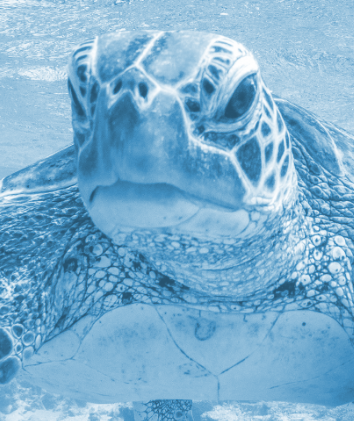Turtles face cadmium risk
 Three out of four turtle populations risk cadmium contamination, according to scientists.
Three out of four turtle populations risk cadmium contamination, according to scientists.
Using a new tool to determine contaminant exposure limits, researchers have developed a virtual turtle model to simulate cadmium uptake and its effects over a turtles’ lifetime.
The model has revealed what level of cadmium concentration in their primary food source, seagrass, is potentially toxic.
“Marine animals are exposed to an array of toxic chemicals entering the oceans,” says lead researcher and PhD candidate Gulsah Dogruer from the Australian Rivers Institute.
“Yet policy makers are basically in the dark about the limits these animals can endure before health effects threaten their survival.
“We developed a framework that sheds some light on this issue for policy makers. By defining the chemical exposure limit for a particular marine animal before there is harmful effects, we can help policy makers identify potentially toxic areas.”
When applied to cadmium in green sea turtles, the researchers revealed a concerning 72 per cent of the Great Barrier Reef’s green turtle populations are at risk from cadmium contamination.
“Our results show that a green turtle population foraging on seagrass with more than 0.1 milligram of cadmium for every kilogram of seagrass, is exposed to potential health risks,” says co-author and supervisor Dr Jason van de Merwe, a marine ecologist and eco-toxicologist at the Australian Rivers Institute.
“As seagrass is green turtles’ primary source of food, this is a real concern, but knowing this threshold level of cadmium is crucial to identify potential exposure sites.”
The researchers used the physiology of the turtles and the chemical properties of cadmium to simulate its absorption, metabolism, excretion, and distribution in the turtles’ liver, kidney, muscle, fat, brain, scute, and rest of the body.
Then, they linked these contaminant concentrations in the turtles to toxic effects seen in laboratory-based studies and in free-ranging turtles.
“Three out of the four globally distinct green turtle populations assessed in Australia, Japan and Brazil are exposed to cadmium levels above the threshold seagrass limits we reported,” Dr van de Merwe said.
“Our framework for determining chemical exposure limits will help managers of conservation sites better understand and minimise the potential risk to marine animals and will hopefully begin to turn the tide for green turtle populations worldwide,’’ Ms Dogruer said.








 Print
Print